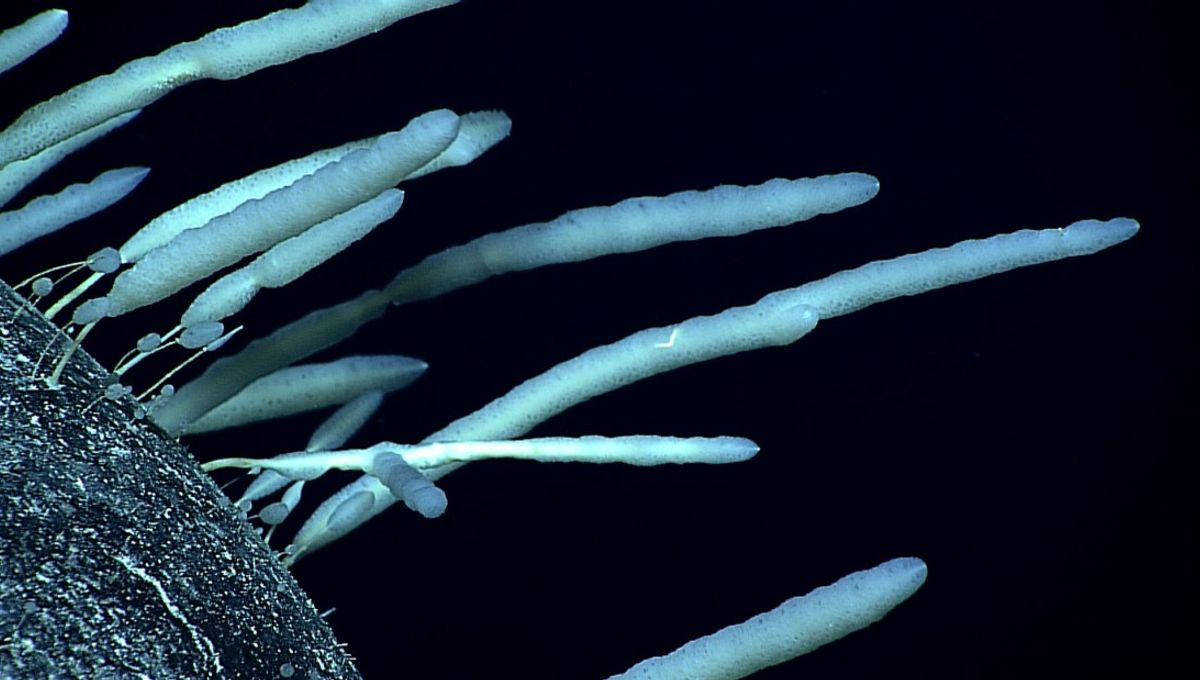
It can be tricky to see sponges as animals, stationary and plant-like as they are, but they represent some of the longest-living animals on the planet. Arguably the most impressive can be found in Antarctica, where scientists estimate one specimen may be as old as 11,000 years.
The sponge in question belongs to the species Monorhaphis chuni, and they spend their lives anchored to ocean substrate via a single giant spicule. Their body is then wrapped around the spicule forming a continuous cylinder, effectively holding its body on a spike above the seafloor, which perhaps inspired the National Oceanographic and Atmospheric Administration’s (NOAA) description of a Monorhaphis species as “maybe the inspiration for corn dogs.”
Can’t argue with them there.
The incredible longevity of these animals was revealed in 2012 when scientists investigated the isotopic and elemental composition of a giant M. chuni specimen’s skeleton. The sponge was already pretty impressive at over 2 meters (6.6 feet) long and 1 centimeter (0.4 inches) thick, but when they looked at the fine silicon dioxide lamellae that make up its glass-fiber-like rod (which grow like the rings of a tree), the result of its age was absolutely staggering.
At around 11,000 years old, the sponge had lived to see a lot of change as it quietly grew at a depth of approximately 1,100 meters (3,609 feet) in the East China Sea until it was discovered in 1986. Over 25 years later, a team of scientists were able to glean some precious information about the climate it developed in by looking at the silicon dioxide rod’s growth patterns.
“Initially we recognized four areas under the electron microscope where the lamellae grew irregularly,” said lead author Klaus Peter Jochum in a release. “They indicate time periods of increasing water temperature, for example due to the eruption of a seamount.”
In exhibiting such exceptional longevity, these sponges present an opportunity to study oceanic conditions using a living climate archive. In doing so, we’ve been able to establish that deep ocean temperature changed several times over the past millennia, and that the temperature where the sponge developed jumped at least once from under 2°C (35.6°F) to 6 – 10°C (42.8 – 50°F) as the result of seamount eruptions. This was information we didn’t have before the discovery of the sponge’s climate potential.
So don’t be fooled by the seemingly simple appearance of deep-sea sponges, as it seems they have all kinds of tricks up their spicules.
Source Link: These Bizarre Antarctic Animals Can Live For 11,000 Years